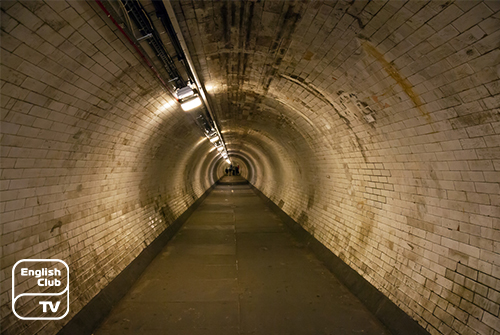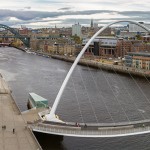Running under the River Thames in London, the Thames Tunnel connects the cities of Rotherhithe and Wapping. Thirty-five feet wide and 20 feet high, the Thames Tunnel extends under the river Thames to a distance of 1,300 feet. Built 75 feet below the surface of the River Thames, it is the first tunnel of that kind constructed in the world. Thomas Cochrane and Marc Isambard Brunel invented new technology in 1825, called the tunnelling shield, and the Thames Tunnel was built using this technology. In 1843, the tunnel was complete. Even though designed for running horse-driven carriages, they never used it. Finally Transport for London took over the tunnel for running trains.
The idea of the Thames Tunnel
The Thames River was an important economic hub in the 19th century, and due to this, many felt an urgent need of connecting the banks to the dockyards of the river. Ralph Dodd, an engineer, first attempted to join the two sides in 1799, but he did not succeed in carrying out his plan. After that, several Cornish miners who tried to build a tunnel between 1805 and 1809 also failed. The failed attempt discouraged engineers, who thought that it was impossible to build an underwater tunnel in the Thames River.
The Tunnelling Shield
After that, March Brunel, an Anglo-French engineer, came up with a proposal to Alexander I, Emperor of Russia, to dig a tunnel under the Neva River in St. Petersburg. But the emperor turned down the proposal and instead approved a plan to build a bridge over the river. But March did not give up his idea of tunnelling and researched for new methods in this regard. In 1818, he and Cochrane, another engineer, invented a new tunnelling system called the tunnelling shield, and they forwarded a plan in 1818, to build a Tunnel between Rotherhithe and Wapping using their new technology.
No sooner they delivered the plan a group of private investors came forward to fund the scheme. Eventually, they formed a company in 1824, called the Thames Tunnel, and the Duke of Wellington too was among those investors. The project got started at the beginning of 1825. The engineers first built a massive shaft at Rotherhithe, 150 feet away from the river bank. On top of the shaft, they built a wall measuring 40 feet high and 3 feet wide. They mounted large excavating machinery weighing over 10000 tonnes on this stage.
Floods
However, their progress of excavation went very slow, excavating only about 8 feet a day. Thousands visited the site to witness the excavations, and the authorities charged them a fee for viewing. The tunnel got flooded in 1827, proving that construction was not such an easy task. In 1828, the tunnel got flooded again, resulting in killing six men. The floods were not only the reason, but also substantial financial strains prevented the engineers from accelerating the work.
The construction of the tunnel cost its investors a fortune. Eventually, however, the tunnel attracted a large number of visitors. Pedestrians had to pay a penny to walk through the tunnel. Everyone who visited London at the time never missed visiting it. So inspired by it, they described it as the Eighth Wonder of the World.
The start of Railway operation in the Thames Tunnel
Ultimately, the Thames Tunnel Company was bought by the East London Railway Company in 1865. The first train ran through the tunnel on December 7, 1869. London Underground absorbed the East London Railway after that and the tunnel became the main route for transporting goods in 1962. In 2016, the authorities opened an exhibition hall at the entrance of the tunnel to entertain the millions who come to London to view the tunnel.

1
Aug








